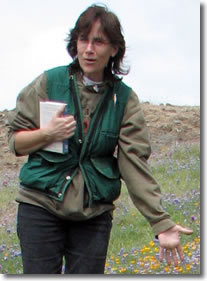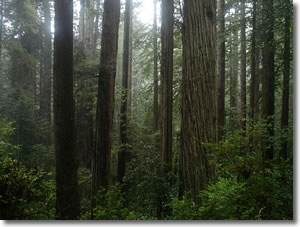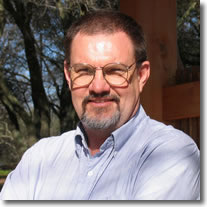Finding Passion
by Josena Aiello
Sierra College student
Sierra College is a very powerful place. It can actually change the course of someone’s life through exposure to novel ideas and innovative classes. After enrolling in Shauna Martinez’s Wildflower Identification class Sierra College changed mine. For some that life changing moment might come from a computer class or a math class when that person might discover a new career path but for me it was this weekend field course.

At the time that I enrolled in the class I had been a floral designer for 25 years. I had touched more flowers than you could imagine. My day-to-day world was one of color and beauty. Yet I knew little about the inner workings or biology of flowers. On that first day of class Professor Martinez had us dissect and view a California poppy under a microscope. For the first time I saw not just the beauty of a flower but the biological reality of one. That changed my perspective on everything. I had made tens of thousands of dollars being in the business of flowers but I had never been that intimate with a flower before.
The following weekend the class embarked on a field trip to Table Mountain near Oroville, California. One the trip Professor Martinez introduced us to the term inverted topography; a strange term for a thing of beauty. What she was describing to us seemed to be an impossibility. This inverted topography describe the vernal pools of the area. These pools produced circular rings of yellow, then white flowers. Other parts of Table Mountain yielded flowers that were so small as to warrant the name of “belly flowers” because one needed to lay flat on their belly to properly view them. Some of these flowers were even growing on top of rock. Apparent impossibilities. She showed us how some seeds are planted by wind, some by cows and some by birds. I realized that I had reached a moment in which I had to change my life.
Park maintenance job
The next week, I found a job listing at the campus Career Connections for a seasonal park maintenance aid at my local State Park in Auburn. Despite the risk and admonition of my family, I decided to take a leap of faith. I took the job and a half cut in pay with no benefits to see what I could learn at this park; what I could learn from a life spent in the field. I learned that the campus had an internship program set up as part of its Watershed Ecology Technician Certificate Program. I could actually gain units for my work in the park. Now at the time watershed was a new word for me; Professor Martinez, who managed the program, had to describe to me what it meant. Armed with this new knowledge the river looked somehow different when I returned to work the next week.

I began to see our watershed in everything. It brought meaning to what I saw in nature each day. I began to realize the interconnectedness of nature. And so that began my career with the California State Parks. By the time I had finished with that internship I began to see that the biggest threat to humankind’s survival was man himself. My time in the park had shown me the disregard that people sometimes have for nature. Something in me was telling me that I had to make a difference. I was doing my best to keep the litter cleaned up in the park but with each piece I said to myself, I have got to show people why they shouldn’t do this.
I volunteered with Keep California Beautiful but quickly learned that they don’t educate the public as much as they support perpetually cleaning up after them. The idea that the solution was to perpetually clean up after people frustrated me. It seemed to be more of a band-aid to the problem than a cure. I tried to affect change at the local high school in my area. Children were perpetually leaving their trash in the parks and the streets. I reached out to the local school officials but there wasn’t much that they could do to stem the tide of trash.
Sierra Nevada Lecture Series

During the semester that I took the Wildflower Identification class, I was also enjoying the Sierra Nevada Lecture Series which was presented as part of the Interdisciplinary Program at Sierra College and was taught by Gary Noy. Professor Noy would describe this majestic area which so rich in natural beauty. It moved me and made it even harder to understand the intentions of people who would treat the area with less respect than their own homes because at least at home people manage to put their trash into the garbage. It was in Professor Noy’s class that I realized the power that Sierra College had to change lives. I realized that this campus not only educated students but also had the power to create the stewards for the next generation.
The following semester I took another field class. The Sierran Conifer Forest with Joe Medeiros. He showed me things I had never noticed before: like the dark inclusions in the granite that had been scratched by glaciers, and how to see the difference in hardness in those rocks by the way they weather. With each of these seemingly outlandish stories I had been told in my classes, my professors have been able to show me the proof. On this trip for example, Professor Medeiros showed us the ancient etchings in stone at Donner Lake and explained how they were measure our fresh water from snow pack. I had been raised up in Lake Tahoe and I never knew these things were there, just off the highway, I’d passed them more times than I can count. I don’t pass them by any more, I realize that they deserve my attention.
How can I change the world?
That same semester I went to Professor Martinez and told her that I really wanted to change the world and make it a better place. I had seen how ineffective the local conservation group had been at keeping parks trash free. I had seen how people are so careless about the environment. I wanted to see those things change. She said to really make an impact that I needed to buy local. This message was reinforced when I took her Current Topics in Biology class. In that class she explained the environmental price of things, like having a pineapple. We don’t grow pineapples here, which means that to get them to our local markets they had to be shipped here. That gasoline creates carbon pollution which contributes to climate change. That gasoline doesn’t generally come from the the United States either. Was In contributing to the perpetuation of oppressive regimes in other parts of the world? Now the bells are really going off, I’m not just looking at mountains and water and trees differently, now I am looking at how my own choices affect the world. I’m looking at my dollars impact on the planet.
Environment and the Human Impact class
Finally, my time working in the state parks ended with seasonal layoffs which meant that I would now take almost a full load of units that semester at Sierra College. This was when I enrolled in the Environment and the Human Impact class taught by Professor Medeiros. Wow this class, wow this class! This course linked together all of the concepts that I had learned at Sierra College so far.

It was this semester that Joe Medeiros really turned my thinking on its edge. He did this three ways. One was with a required book we read that explained that humans were part of the environment, not the masters of it. Next was on a trip to the ocean. I am a mountain girl and had never really been excited by the ocean. He showed me how the mountains and the oceans were interconnected through the seasonal melting of the snow.
I worried that all the litter that I wasn't able to pick up was being brought downhill to the seals, sea otters and herons. He shared his expertise with us. We were even able to use kayaks to visit the mouth of the river where we could see the difference in vegetation, animals and bugs in that space where the river meets the sea. He helped me see the beauty of an estuary, and the importance of the diversity of life, something I never understood before.
I wish I had known this earlier!
Now that I am in my late forties I can only imagine how much more enjoyable my life would have been if I had had this information earlier. When my professors showed me land preserves on these field trips I began to understand the value of saving an area for the sake of the area, not for humans’ enjoyment or entertainment or recreation. That a preserve like the Redwoods which I was able to visit on another field trip, needed to be big enough to support the sensitive life at its center. To be insulated from the larger portion of the human influenced world.
The third thing that I learned from Professor Medeiros was that I could affect change as a volunteer in the community. It was through him that I found the Placer Nature Center in Auburn. There I am able to teach 10 children at a time why they shouldn’t litter, why they should to try to not affect the animals and insects while we observe them, all the while turning them onto nature and how special the Sierra Foothills really are. I could teach the next generation of children how to be good stewards for the environment and they could teach their parents. Instead of picking up litter, I could prevent it in the first place.
The next semester I got a student job working with Keely Carroll, who took over the Interdisciplinary class after Joe Medeiros’ retirement, reading student discussions that she assigned each week in class. That gave me a direct experience with the viewpoints of three semester’s worth of students, more than 300 students, who over the course of a semester, can come full circle and have experiences not unlike my own. At the beginning of the semester their discussions seem to reflect a consensus that they like their lifestyles and they don’t care about the environment enough to change their lifestyles to help the planet. Then they are shown through class activities and assignments what their environmental impact really is. Their surprise is often palpable and they would begin to soften a bit and realize things about their own lifestyles that affect the planet.
Less me, more global
By the end of the semester the many of them are spending their money differently, looking for ways to improve the quality of the planet, looking around themselves and seeing a bigger picture. One that is less ME oriented but globally oriented. They also found a sense of pride that can come from thinking more about others than about yourself. They became willing to get involved and, for some, to challenge their own fears. And nothing is really the same after that, they become better citizens: more open, more aware, more capable, and more confident.
The field classes are important in so many ways, not just to the education students but how these courses can change the way they see the world. That is why Sierra College is so powerful; it isn’t just making them equipped with medical information, computer skills or statistics for banking and the stock market. Because of these environmental science classes we are becoming better Californians, better parents and grandparents, better citizens.
